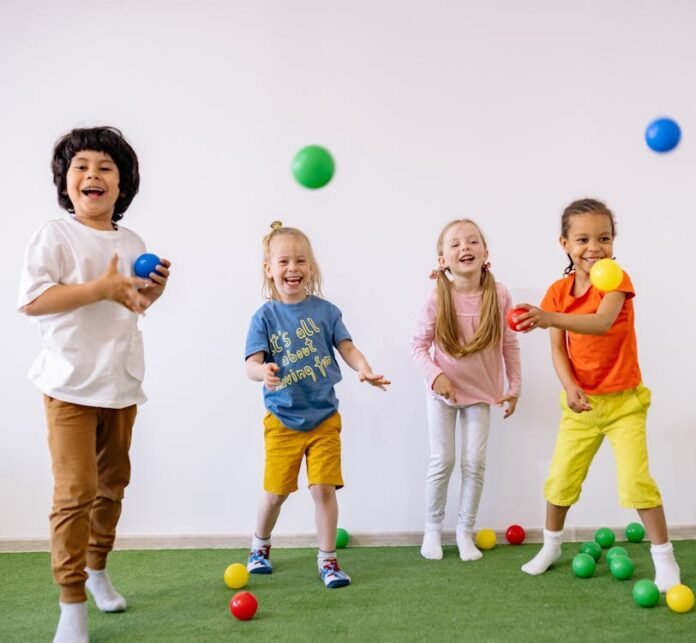Introduction:
In a world often divided by politics, culture, and geography, sports connections nyt remain one of the few universal languages capable of bridging gaps. From playgrounds in Brooklyn to global stadiums, sports create connections that transcend background, ideology, and even language. Inspired by The New York Times‘ daily puzzle “Connections” and the intricate ways sports themes have recently appeared in it, this article explores how sports link individuals, communities, and cultures across generations.
1. The Puzzle of Identity: How Sports Shape Who We Are
Sports connections nyt are more than just games—they are fundamental to how many people see themselves. Whether it’s wearing a Yankees cap or cheering for Serena Williams, the athletes and teams we support often reflect deeper aspects of our identity. In the NYT Connections puzzle, sports-related clues frequently ask readers to group terms not just by sport, but by theme: legacy, team colors, even stadium nicknames. This mirrors how, in real life, fans connect to the ethos of a team or athlete. A child who grows up playing soccer in Queens may feel a lifelong bond to the sport, integrating it into their identity long after they stop playing. These connections are deeply personal, often beginning in youth and evolving over time, forming a foundational part of who we are.
2. Local Fields, Global Dreams: Community Through Competition
Sports have long acted as a bridge within and between communities. In cities like New York, where cultures collide daily, sports fields serve as common ground. Basketball courts in Harlem, baseball diamonds in the Bronx, and soccer pitches in Flushing all act as melting pots where diverse backgrounds meet over shared goals. In the NYT’s approach to themed puzzles, recognizing terms like “Derby,” “Clásico,” or “Super Bowl” draws attention to the globally understood nature of competition and celebration. Local rivalries can create fierce division, but more often they stimulate unity through shared tradition. Community leagues and school teams aren’t just about competition—they’re about forming bonds that might otherwise never occur.
3. Media, Memory, and the Mythmaking of Sports Legends
The connection between sports and media has always been strong, but The New York Times elevates it with reflective journalism and interactive content that encourages readers to think critically. When the Connections game includes athletes’ names, iconic moments, or championship years, it taps into the collective memory of its audience. This mirrors how fans recall where they were during “The Shot” by Michael Jordan or Megan Rapinoe’s celebration at the Women’s World Cup. These aren’t just sports moments—they’re cultural bookmarks, permanently engraved in public memory. The storytelling around sports heroes elevates them to mythic status, reinforcing connections that pass from generation to generation. For many, stories of grandparents who loved Jackie Robinson or parents who watched the Miracle on Ice become threads that bind family histories.
4. From the Bleachers to the Screen: The Digital Evolution of Fandom
The way we connect through sports has changed dramatically in the digital age. Where once fans huddled around radios or TVs, now they livestream games, follow athletes on Instagram, and debate on Reddit or X (formerly Twitter). Even The New York Times‘ inclusion of sports in its digital puzzles and newsletters reflects this modern blend of content and community. These platforms have democratized fandom, allowing people around the world to participate in the same conversations in real time. You no longer have to be in Madison Square Garden to feel the energy of a Knicks game—you can live it through hashtags, memes, and real-time chats. This evolution has broadened the scope of sports connections, making them more inclusive and instantaneous.
5. Beyond the Game: Activism and Social Connection in Sports
Some of the most powerful moments in sports history have had little to do with the scoreboard. From Muhammad Ali’s refusal to be drafted to Colin Kaepernick’s kneeling protest, athletes have used their platforms to speak out on issues of justice and equity. These acts, often covered and debated extensively by outlets like The New York Times, become flashpoints for broader social discourse. The connections forged here are not just between fans and teams, but between strangers united by shared values. When puzzles or articles hint at these historical moments, they remind readers that sports are never just about winning—they’re about making a statement. These deeper connections underscore sports’ power to inspire, provoke, and ultimately unite.


